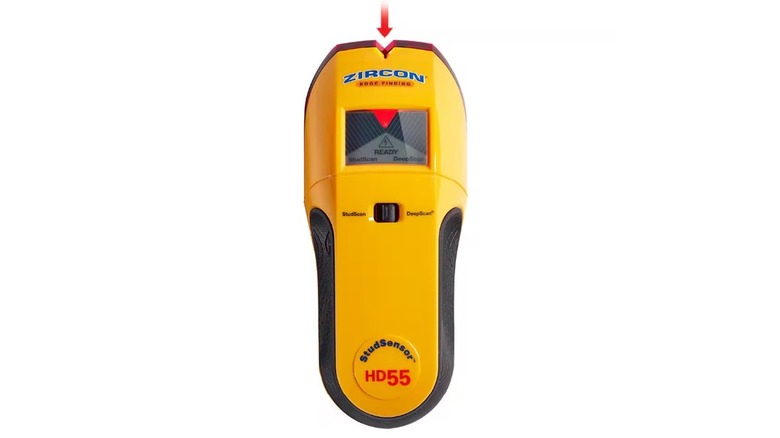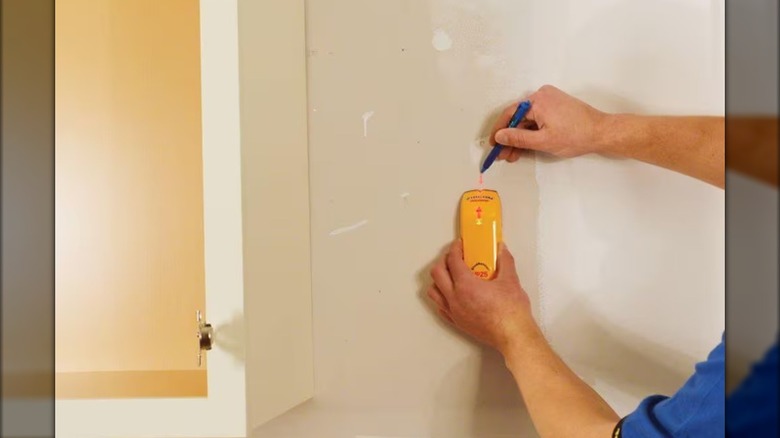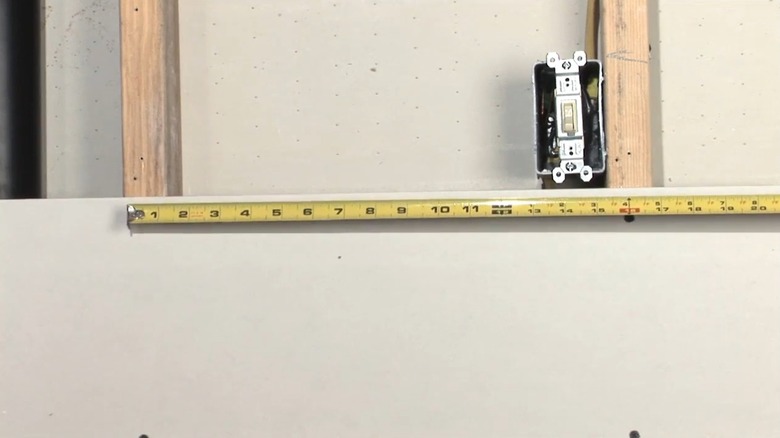Here's How To Use A Zircon Stud Finder
We may receive a commission on purchases made from links.
Locating a wall stud is essential if you're trying to hang anything heavy on the wall, and not doing so is one of the biggest mistakes you might be making when mounting a TV. If you're looking to find a stud, then the Zircon stud finder is one of the many easy-to-use stud finders on the market today. Begin by selecting the mode for scanning studs (if applicable). You'll need to calibrate the tool before each scan, which simply involves pressing it against the wall and holding the button on the left side of the unit until you see a green light or hear an audible indication that it's ready, depending on the model.
While continuing to hold down the side button, slide the Zircon left or right along the wall until the device indicates a stud. Some Zircon models use basic lights on the top of the device, with certain sections illuminating to show you a stud's location. Other models include LCD displays, which can help in identifying both the edges and the center of the stud.
How does a Zircon stud finder work?
There are certain tools around the home which can come in handy often, a Zircon stud finder is one of them, and among the best stud finders for any job. These devices peer through drywall and help pinpoint the location of framing studs and other objects. More advanced models can identify metal and electrical wiring.
Zircon has been around since 1975, and released the first StudSensor stud finder back in 1980. This technology works by detecting the electric charges present on the wall surface. When calibrating the tool (one of the important first steps before scanning), a small electric field is generated, and the Zircon calculates the time required for the drywall to achieve a set charge of voltage, creating a baseline. This then allows for increases in wall density to be identified, such as a solid piece of wood framing, making it an easy task for Zircon to differentiate between empty space and a stud.
Is finding the center of the stud important and how do you avoid false positives?
It's crucial to identify the center of the wall stud before hanging or mounting items in your home. You also shouldn't mount your TV above a fireplace, because it's likely composed of brick, not wood framing. You shouldn't try to anchor to any other point on the wood but the center, as you could be relying on a fastener barely secured to the stud's edge. This is why Zircon (and other brands) of stud finders both indicate the edge and center of each stud. So, pay close attention as you're scanning to ensure you mark the stud's center for the best fastening point.
Because Zircon is looking for increases in density, sometimes it can pick up other things, such as pipes within the wall. This could potentially lead to mistaking another object for a stud. Before taking any other action, it's never a bad idea to double-check and scan the same area again. However, if you still get a positive reading and you're not sure if it's a stud, there are a few ways to narrow it down. Most studs should be 16 inches on center apart from each other, so anything closer is something else. A stud is typically comprised of a standard 2x4, which means the width should be slightly under 2 inches, with anything wider than 2 inches being considered a different type of material.


